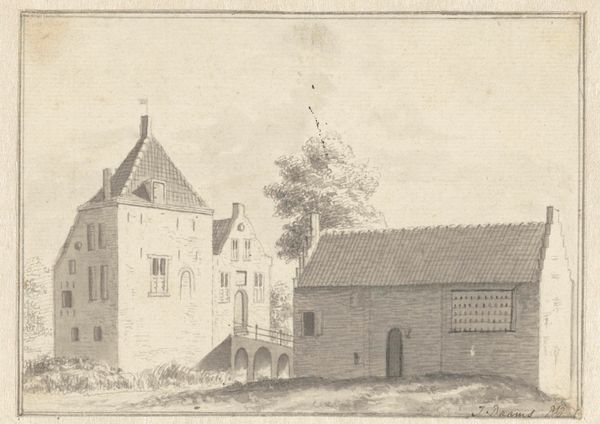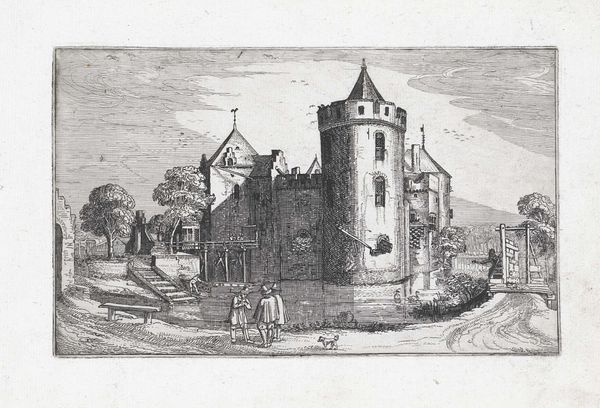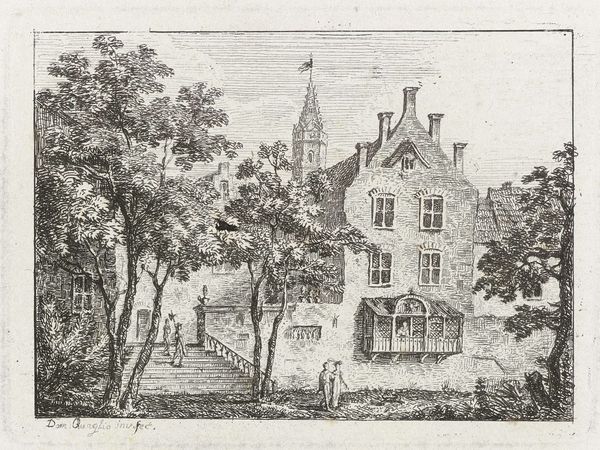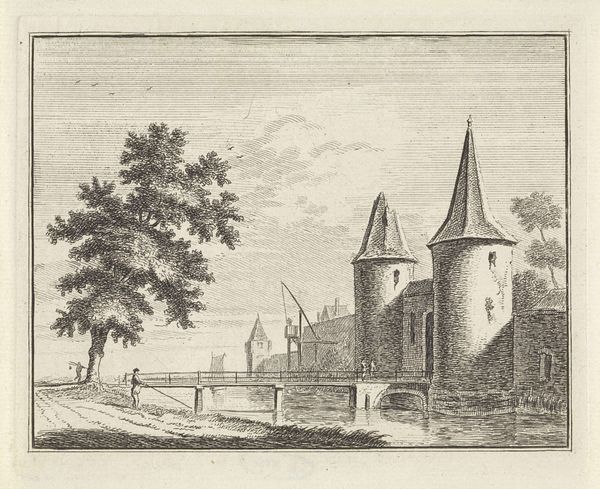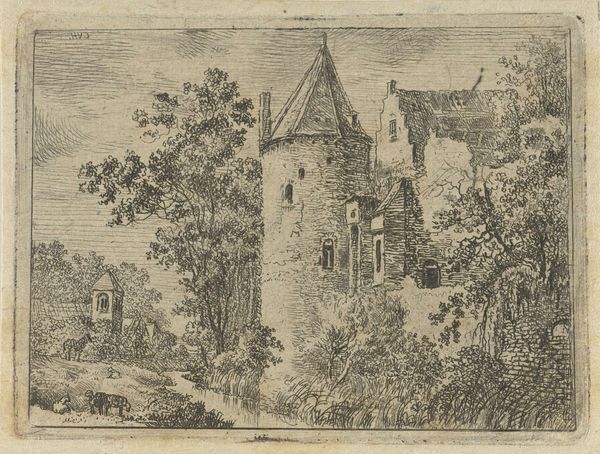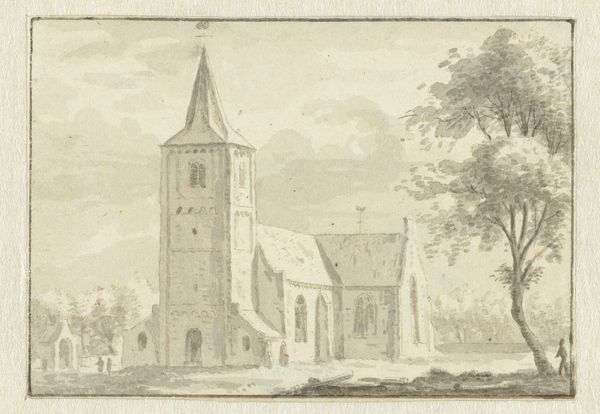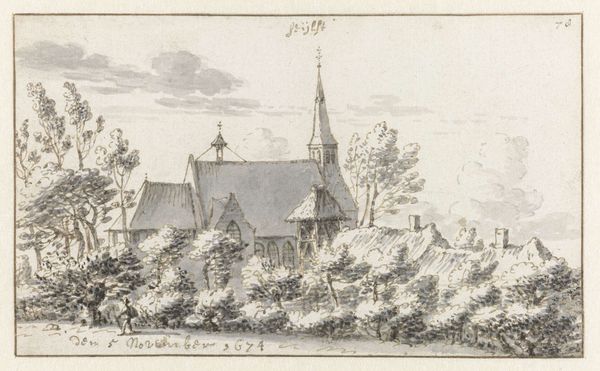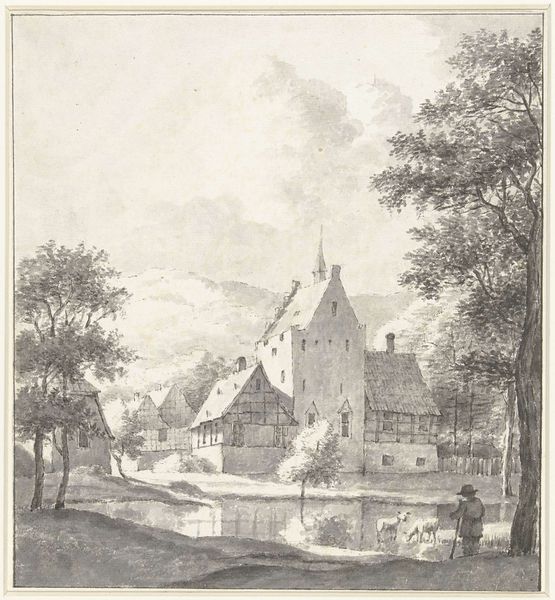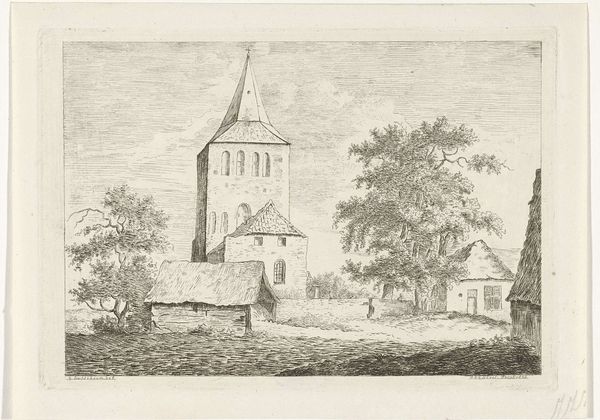
drawing, etching, ink, pen
#
drawing
#
dutch-golden-age
#
pen sketch
#
etching
#
old engraving style
#
landscape
#
ink
#
pen
#
genre-painting
Dimensions: height 93 mm, width 141 mm
Copyright: Rijks Museum: Open Domain
Anthonie Waterloo made this etching of a village church on water some time between 1610 and 1690. Etching is a printmaking technique using acid to corrode the unprotected parts of a metal surface to create a design in the metal. The plate then is inked and printed onto paper. The character of the lines in this print are determined by the artist, who has drawn through a waxy ‘resist’ applied to the plate. Where the metal is exposed, the acid bites into it, creating delicate furrows. Once printed, the image has a unique graphic quality, almost like a pencil drawing. The nature of this process had a direct influence on its uptake by artists. Etching enabled the relatively easy reproduction of an image, disseminating it among a wide audience, and making art more accessible to ordinary people. So while Waterloo surely had aesthetic considerations in mind, the material processes he chose were equally important. They are tied to social issues of labor, politics, and consumption, all captured in a single scene.
Comments
No comments
Be the first to comment and join the conversation on the ultimate creative platform.

